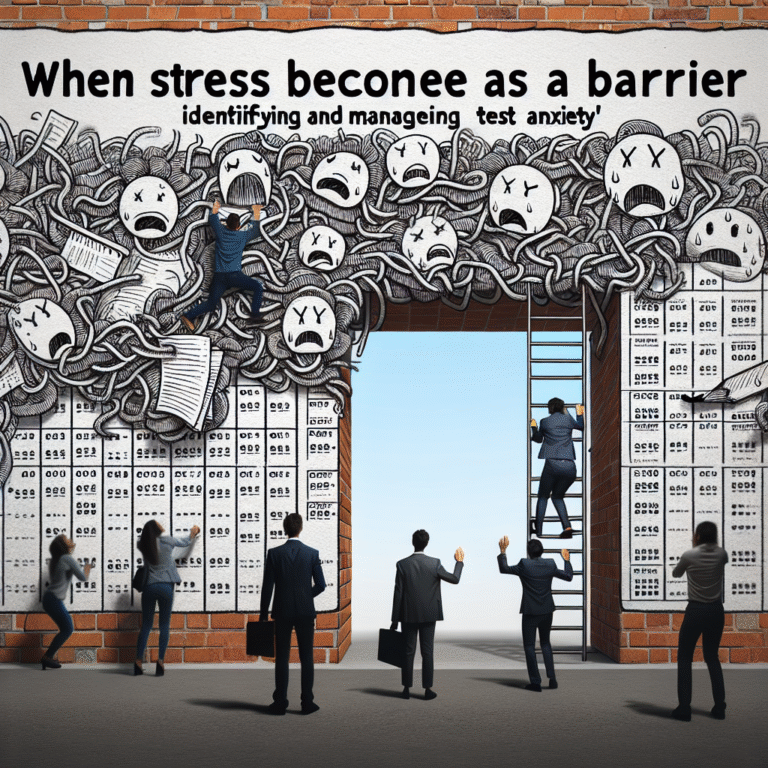
Introduction
Have you ever found yourself so engrossed in a task that time seemed to vanish? Perhaps it was a passion project, a favorite hobby, or even a challenging problem that you couldn’t wait to solve. This captivating experience, often leading to heightened creativity and satisfaction, sheds light on a compelling aspect of human psychology: intrinsic motivation. Welcome to The Inner Drive: Understanding the Psychology Behind Intrinsic Motivation, where we’ll unravel the complexities of what truly motivates us from within.
Research shows that intrinsic motivation is not just a key driver of performance but also contributes significantly to psychological well-being and lifelong learning. It’s essential to explore how this inner drive operates, its implications on our lives, and how we can cultivate it to achieve our fullest potential.
Understanding Intrinsic vs. Extrinsic Motivation
Before delving deeper, it’s critical to distinguish between intrinsic and extrinsic motivation.
What is Intrinsic Motivation?
Intrinsic motivation refers to doing something because it is inherently interesting or enjoyable, rather than for some separable consequence. For example, a musician practices because they love the act of playing, not primarily to earn money or recognition.
What is Extrinsic Motivation?
Conversely, extrinsic motivation involves engaging in a behavior to earn exterior rewards or avoid punishment. Examples include studying to achieve good grades, working for a paycheck, or completing chores to avoid reprimand.
The Spectrum of Motivation
Understanding The Inner Drive: Understanding the Psychology Behind Intrinsic Motivation necessitates acknowledging that motivation exists on a spectrum. Most tasks require a blend of both types. However, fostering intrinsic motivation leads to more sustained engagement and satisfaction.
| Type of Motivation | Definition | Examples |
|---|---|---|
| Intrinsic | Driven by internal rewards | Enjoying art, solving puzzles |
| Extrinsic | Driven by external rewards | Money, grades, praise |
The Psychology of Intrinsic Motivation
Theories of Motivation
-
Self-Determination Theory (SDT):
Developed by Edward Deci and Richard Ryan, SDT posits that intrinsic motivation flourishes in environments that support autonomy, competence, and relatedness. This theory suggests that to encourage intrinsic motivation, we must create conditions where individuals feel they have choices, are capable, and are connected to others. - Flow Theory:
Proposed by Mihály Csíkszentmihályi, the concept of “flow” describes a state of complete immersion and enjoyment in an activity. Achieving flow requires a balance between the challenges of an activity and one’s skills, making it a powerful illustration of intrinsic motivation.
Case Study: The Power of Autonomy
Consider a case study involving Google, known for its unique work culture. Google encourages employees to dedicate 20% of their work time to projects they are passionate about. This autonomy led to the creation of successful products like Gmail and Google News. Employees reported higher job satisfaction and creativity, demonstrating that when people pursue what interests them, it can yield remarkable results.
Factors Influencing Intrinsic Motivation
-
Interest and Enjoyment:
Engaging in tasks aligned with personal interests naturally leads to intrinsic motivation. This reinforces the importance of choosing career paths or hobbies based on passion rather than obligation. -
Challenge:
Intrinsically motivated activities often involve an appropriate level of challenge. Striking the right balance—where the task is neither too easy nor overwhelmingly challenging—can trigger deeper engagement. -
Mastery:
The pursuit of mastery fuels intrinsic motivation. As individuals see their skills improve, they gain a sense of accomplishment that drives them to continue honing their talents. - Social Relatedness:
Positive social interactions and relationships foster a sense of belonging, enhancing intrinsic motivation. Working in collaborative settings can amplify this effect, as shared goals and teamwork become motivating factors.
| Influencing Factors | Description |
|---|---|
| Interest and Enjoyment | Personal connection to the activity |
| Challenge | Appropriate difficulty level |
| Mastery | Sense of progress and skill development |
| Social Relatedness | Engaging connections with others |
Practical Strategies for Cultivating Intrinsic Motivation
Discover Your Passion
One of the first steps in harnessing The Inner Drive: Understanding the Psychology Behind Intrinsic Motivation is identifying what genuinely interests you. Journaling, trying new activities, and reflecting on past enjoyable experiences can help in discovering your passions.
Set Personal Goals
When you set personal, self-concordant goals—objectives that align with your intrinsic values—you create a sense of ownership over your motivation. Ensure these goals emphasize growth rather than outcomes, focusing on the journey rather than solely on the results.
Foster a Growth Mindset
Adopting a growth mindset, as popularized by Carol Dweck, encourages viewing challenges as opportunities for growth rather than obstacles. This perspective enhances resilience and perseverance, crucial components of intrinsic motivation.
Create a Supportive Environment
Surrounding yourself with supportive individuals who respect your passions and encourage autonomy can significantly affect your intrinsic motivation. Seek mentorship, collaboration, or communities that resonate with your interests.
Embrace the Power of Feedback
Constructive feedback, especially focused on effort and improvement, can bolster intrinsic motivation. Rather than focusing solely on outcomes, appreciate the process and the strides made along the way.
Case Study: Healthcare and Intrinsic Motivation
In a groundbreaking study, researchers surveyed healthcare professionals regarding their motivations in patient care. Results indicated that those who found intrinsic satisfaction in helping others reported lower levels of burnout and higher job satisfaction. This reinforces the principles of autonomy and purpose—the professional environment is critical for enhancing intrinsic motivation.
Conclusion
The Inner Drive: Understanding the Psychology Behind Intrinsic Motivation reveals the profound impact intrinsic motivation has on our lives. As we’ve explored, fostering this inner drive can lead to not only greater satisfaction in our activities but also improved resilience and well-being. By recognizing what genuinely drives us and creating conditions conducive to internal motivation, we can unlock our full potential.
As you venture into your daily pursuits, remember: follow your passions, embrace challenges, and cultivate an environment that nurtures innovation. Your intrinsic motivation is the key to a more fulfilling and productive life.
FAQs
1. What are some common signs of intrinsic motivation?
Common signs include a deep interest in an activity, enjoyment without external rewards, and a persistent desire to improve one’s skills.
2. How can I measure my level of intrinsic motivation?
Self-reflection and journaling can provide insights into the activities you engage in for enjoyment versus obligation. Consider which tasks make you lose track of time.
3. Can intrinsic motivation be developed over time?
Absolutely! By exploring new interests, setting personal goals, and fostering a growth mindset, you can cultivate intrinsic motivation.
4. How does intrinsic motivation affect performance in the workplace?
Individuals with high intrinsic motivation often show increased creativity, productivity, and job satisfaction, leading to more significant contributions to their teams.
5. What role does environment play in fostering intrinsic motivation?
A supportive environment that encourages autonomy, teamwork, and provides feedback can significantly enhance intrinsic motivation. When individuals feel their contributions matter, they are more likely to feel motivated from within.
By exploring The Inner Drive: Understanding the Psychology Behind Intrinsic Motivation, we can navigate our personal and professional journeys more effectively, transforming challenges into opportunities for growth and satisfaction.


















